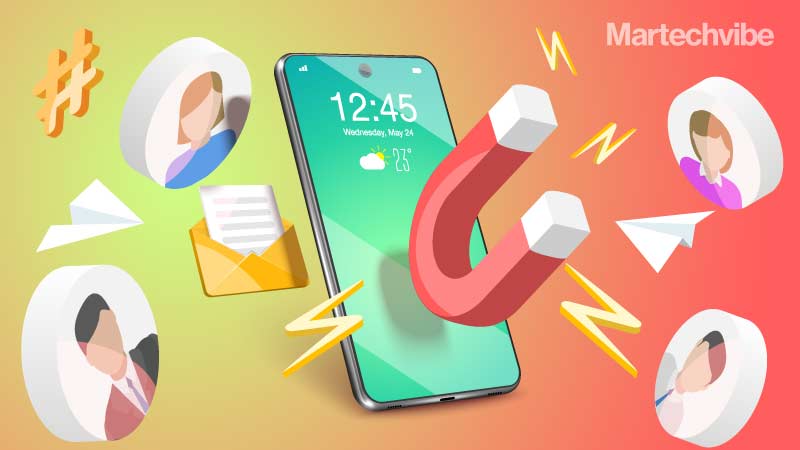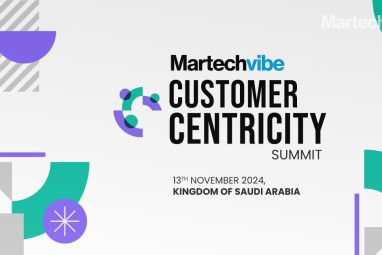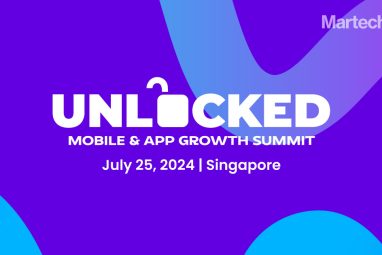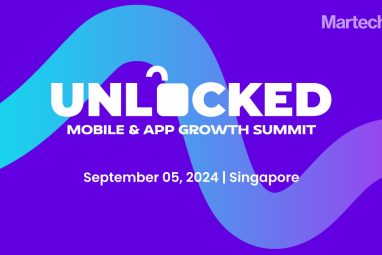From Survive to Thrive: How Retention OS is Driving Brand Loyalty
The new phase for marketers is about delivering an experience that encourages brand loyalty. This can be achieved by creating moments that are carefully curated and informed by data. Marketers must deliver contextually relevant interactions that are seamlessly assimilated into the consumer’s lifestyle and build emotional connections. According to a recent McKinsey report, the pandemic […]
Topics
What to Read Next
- VWO, AB Tasty Partner to Build the Future of Digital Experience Optimisation
- Optimove Unveils AI Content Decisioning, an OptiGenie Agent
- Higgsfield Raises $130M, Valued at $1.3B to Fuel the Future of AI Video Creation
- Automation Anywhere Advances AI-Native Agentic Solutions with OpenAI
- Acosta Group Announces Strategic Alliance with CommerceIQ

The new phase for marketers is about delivering an experience that encourages brand loyalty. This can be achieved by creating moments that are carefully curated and informed by data. Marketers must deliver contextually relevant interactions that are seamlessly assimilated into the consumer’s lifestyle and build emotional connections.
According to a recent McKinsey report, the pandemic prompted changes in consumer behaviour. The more obvious ones include moving to a digital-first method of buying, seeking contactless deliveries, and prioritising health and hygiene. It is not hard to imagine that these changes were prompted by economic pressures, lockdowns, and changing priorities. However, some behavioural changes will morph further and survive post the pandemic. An interesting insight that the McKinsey report noted was a shift in the way consumers perceived and reacted to brand loyalty. According to the data, 36 per cent of consumers tried a new product or brand during the pandemic. Of consumers who tried different brands, 73 per cent said they intend to continue incorporating the new brands into their routine.
This is surprisingly good news for brands looking to expand their customer base by being discoverable and putting a personalised foot forward. But it also means that existing customers need to be taken care of so they don’t churn. Considering it can cost five times more to attract a new customer than it does to retain an existing one — it makes sense to keep existing customers happy. Further, increasing customer retention rates by a mere 5 per cent increases profits by 25 to 95 per cent, according to research done by Frederick Reichheld of Bain & Company.
The marketer’s mindset needs an update as well to keep up with changing consumer expectations. What will make your brand stand apart when a customer is asked to choose between several similar offerings? Personalised experiences are a top differentiator in an increasingly commoditised marketplace. At the same time, customer experience is a leading factor to influence brand loyalty. Delivering on these two brand promises will not only drive better performance of campaigns but it will do so with an optimised return on investment.
Also Read: Customer Loyalty Comes With Personalisation
Building your brand’s retention stack
Marketing technologies or MarTech holds the key to unlock superior customer engagement and experience. But navigating the landscape can be intimidating since it means integrating with existing systems, training teams to maximise usage, and custom-fitting it to suit the needs of your business. If you opt for a number of tools, you run the risk of having too many disparate systems that operate in silos and don’t communicate with each other. Across the customer journey, data needs to flow seamlessly in a way that previous interactions inform later ones to add context and added value.
At last count, there were more than 6,000 MarTech solutions available in the market. It’s a chaotic space where vendors are vying for the marketers attention. It can seem like a daunting task for marketers to cut through the clutter and find solutions that not only fulfill their requirements but also work seamlessly with existing legacy systems. Interoperability is a key factor when setting up your company’s technology stack that will help in working towards your marketing goals, tracking campaign performance and optimising the team’s efforts. Put simply, you want a stack that solves problems, and doesn’t add new ones. Further, marketers need to maximise their marketing impact by testing, analysing, and optimising marketing campaigns constantly.
The solution is to opt for a one-stop, multi-product operating system for retention marketing. WebEngage’s Retention Operating System is a suite of integrated tools designed to execute data-backed engagement strategies that power user retention at scale. Think of it as a single solution to drive engagement via customer journey design, personalisation using data analytics, and an omnichannel campaign orchestrator.
The Retention OS is made up of →
CDP & Insights Platform
Brands understand that data is the raw ore that will help their interactions with customers shine. But marketers need help refining this data or making sense of it. Customer Data Platforms offer a unified view of a customer from different dimensions using data from various sources but structured in a way that avoids duplication or dilution.
When you trust your data, you can integrate real-time insights into your interactions with the customer to offer them more valuable service.You can track users’ behaviour such as products browsed, session time, intent, and more. This will help you understand the optimal time, channel, and message to nudge users through the conversion funnel. Marketers can take on short-term challenges like cart abandonment and achieve long-term goals like translating one time buyers into loyal, repeat customers.
Web & App Personalisation
Customising user experience across your website and mobile app is akin to having a one-on-one conversation with the customer as opposed to sending out a broadcast message that treats everyone the same. Brands can personalise elements in a website or application, in part or as a whole, to open up uniquely to each user.
Using real-time data from sources such as your company’s CRM system, recommendation engine or catalog, marketers can create hyper-personalised campaigns that are informed by the user’s historical data. It’s not only the offer that can be personalised but the messaging itself that brands can customise to add warmth and increase engagement. Marketers can build customised engagement to have contextual conversations with customers.
This not only elevates customer experience but also works as a differentiating factor to gain a sustainable edge over competitors.
Also Read: Getting App Users to Stay
Omnichannel Campaign Manager
Customers want personalisation throughout their interactions with companies across multiple touchpoints that enable them to allocate their time and money according to their preferences. The journey designer tool guides users along different paths and lets brands respond thoughtfully based on users’ actions and reactions to messaging and events.
Choose a tool that makes it easier to manage such dynamic lifecycle campaigns at scale. The campaign manager function lets teams visualise and map different scenarios in which users experience the product, tracking their actions and tailor real-time communication to each individual through various preferred channels. At the backend, it lets teams visually build user lifecycle campaigns through an intuitive drag & drop interface. This makes complex workflows trackable and easy to iterate based on a feedback loop.
Conclusion
According to Merkle’s 2021 Loyalty Barometer, marketers are witnessing a rapid evolution of loyalty from a static, programmatic strategy to an enterprise-wide endeavour that delivers improved outcomes with every brand interaction. This transformation is driven by increased consumer centricity, applications of new technologies and the use of identity and data to inform customer relationship moments.
There is a shift in how brands treat customers. While this may be a reaction to changing customer behaviours, it is here to stay. Companies that catch on early and put processes in place to deliver better customer experiences will win over the competition.
This article is sponsored by WebEngage. A full-stack marketing automation suite that drives growth for consumer businesses by enabling them to engage users via multiple channels like Push, In-app, SMS, On-site Notifications, Web Push, Email, Facebook-Instagram, and WhatsApp. The platform’s analytical capabilities also make it possible for businesses to get a 360° view of their users, product, campaigns and compare the impact of each channel of engagement.









































































































